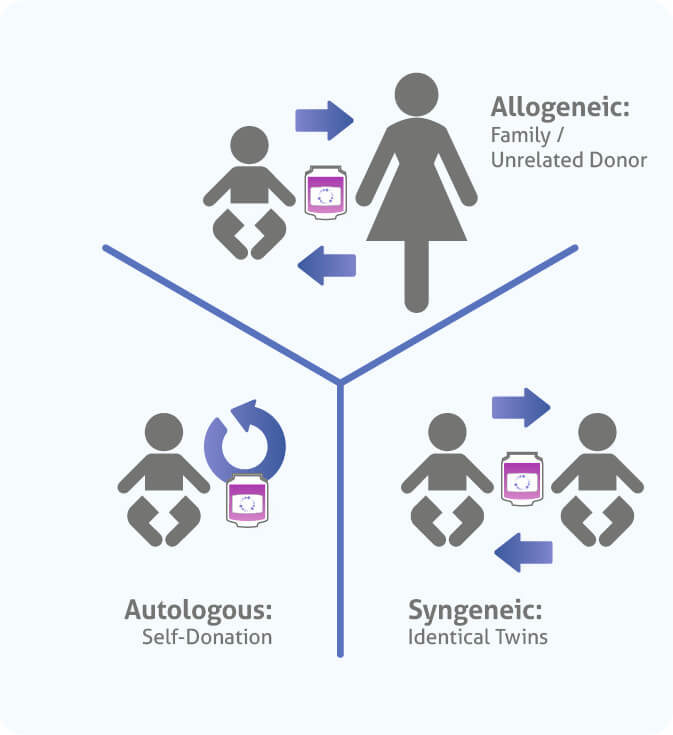A path full of hope, peace and harmony
A path full of hope, peace and harmony
Why bank your baby's stem cells?
Cord blood banking is the safest way to store stem cells from your baby’s umbilical cord blood. You will have immediate access for your child or their immediate family members’ usage if a medical need arises in the future.
Storing your baby’s cord blood will provide him/her and all of his/her immediate family the ability to treat nearly 80 life-threatening illnesses, including certain cancers, bone marrow failure syndromes, immunodeficiencies, blood disorders, metabolic disorders, and even degenerative diseases.
Successful Cord Blood Storage
Today, over 35.000 Cord Blood Stem Cell transplants have already been used for therapeutic intervention treating nearly 80 diseases.
More than 400-500 new patients receive treatment annually.
Since 2000, Cord Blood transplant is the fastest-growing treatment in pediatric medicine.
1 in 7 North Americans, prior to age 70, will require treatment for cardiac repair.
The perfect time to have a life backup
Life is a miracle, and that you are still alive goes much further. Dangerous diseases or conditions could appear out of nowhere. This is how the complex world in which we live behaves, so we must be prepared.
- About 4 per 1000 live births are diagnosed with cerebral palsy.
- About 1 in 59 children are diagnosed with autism.
Your peace of mind is also part
of the benefits of storing cord blood
The collection poses no harm to the newborn or the mother.
Approved to treat 80 diseases that were once untreatable.
Does not require an exact match like bone marrow.
Immediate availability, which can minimize disease progression with early treatment.
Can be used for the baby or a family member.
Higher rate of engraftment over bone marrow cells.
Treating diseases beyond traditional transplant medicine, such as Autism and Cerebral Palsy.
Can be used for the baby or a family member.
Higher rate of engraftment over bone marrow cells.
Treating diseases beyond traditional transplant medicine, such as Autism and Cerebral Palsy.
Cord Blood Statistics
Cord Blood Statistics
- 62.7% of cord blood transplants are used to treat leukemia.
- 552 patients have been treated for Acute Lymphoblastic Leukemia with a cord blood transplant from 2005 data.
- The children who received matched cord blood had a 20% higher survival rate than those children who received matched bone marrow stem cells.
- 28% of the cord blood transplants have been used to treat genetic diseases. The most common genetic disease treated is Severe Combined Immune Deficiency, closely followed by aplastic anemia.
- 53% of the people who receive cord blood transplants are of Caucasian descent.
- 2 out of every 3 worldwide cord blood transplants happen at a US hospital.
- Over 600.000 umbilical cord blood units have been stored for transplantation worldwide.
- The probability of disease-free survival with a cord blood transplant: 44%. Children typically have higher overall survival rates at every marker than adults.
- The initial cord blood transplant mortality rate for adults before day 100 was 40%.
- When related donor cord blood is used for a transplant, survival rates are 3x higher at one year than if unrelated cord blood is used.
The importance of genetic compatibility
In cord blood, finding a genetic match from a public stem cell bank for individuals of any race can be quite challenging or next to impossible. Especially those that come from certain mixed ethnicities, such as African Americans, Asians, Hispanics, and Native Americans or other indigenous populations. Therefore, having your stem cells stored for future use has become increasingly important. In comparison to Bone Marrow, cord blood transplants do not require an exact genetic match.




